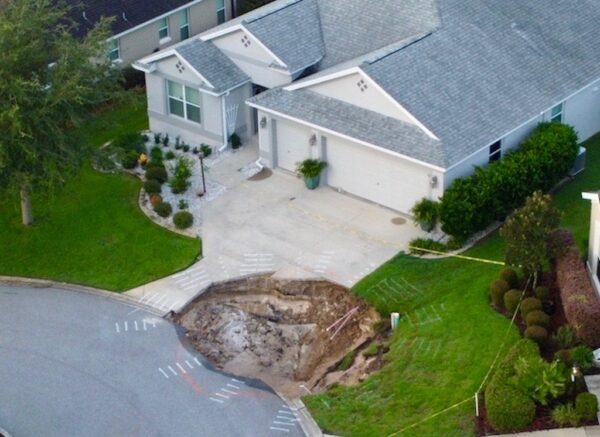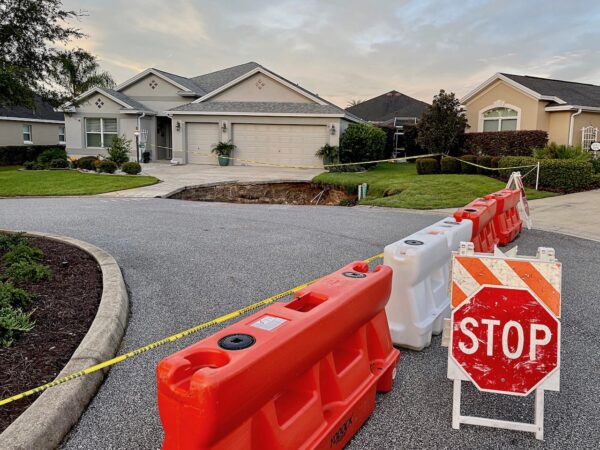A large sinkhole at the end of a driveway has a neighborhood on edge in The Villages.
The sinkhole has formed at the home at 3180 Abana Path in the Village of Fernandina. The Villages has taken the precautionary step of setting up barriers to keep traffic out of the cul-de-sac.


A similar situation occurred with sinkhole in July in the Village of Springdale. Community Development District 4 supervisors were told in August that a clay plug initially was used in that sinkhole, followed by grouting to fill in the void.

Why do we see so many sinkholes in The Villages?
Sinkholes are a common feature of Florida’s landscape due to the karst landforms, according to the Florida Department of Environmental Protection.
Karst is a generic term that refers to the characteristic terrain produced by erosional processes associated with the chemical weathering and dissolution of limestone or dolomite, the two most common carbonate rocks in Florida. Dissolution of carbonate rocks begins when they are exposed to acidic water. Most rainwater is slightly acidic and usually becomes more acidic as it moves through decaying plant debris.
Limestones in Florida are porous, allowing the acidic water to percolate through their strata, dissolving some limestone and carrying it away in solution. Over eons of time, this persistent erosional process has created extensive underground voids and drainage systems in much of the carbonate rocks throughout the state. Collapse of overlying sediments into the underground cavities produces sinkholes.
Other subterranean events can cause holes, depressions or subsidence of the land surface that may mimic sinkhole activity. These include subsurface expansive clay or organic layers that compress as water is removed; collapsed or broken sewer and drain pipes; broken septic tanks; improperly compacted soil after excavation work; and even buried trash, logs and other debris. Often a depression is not verified by a licensed professional geologist or engineer to be a true sinkhole, and the cause of subsidence is not known. Such events are called subsidence incidents.

